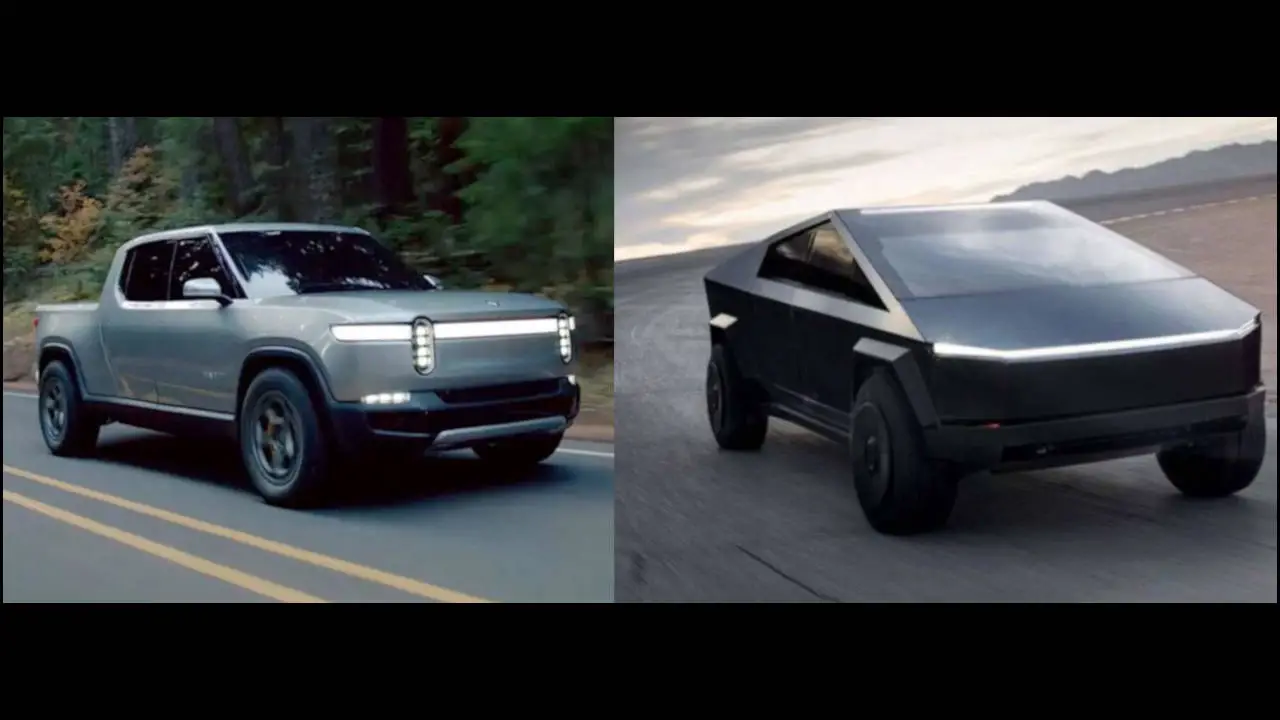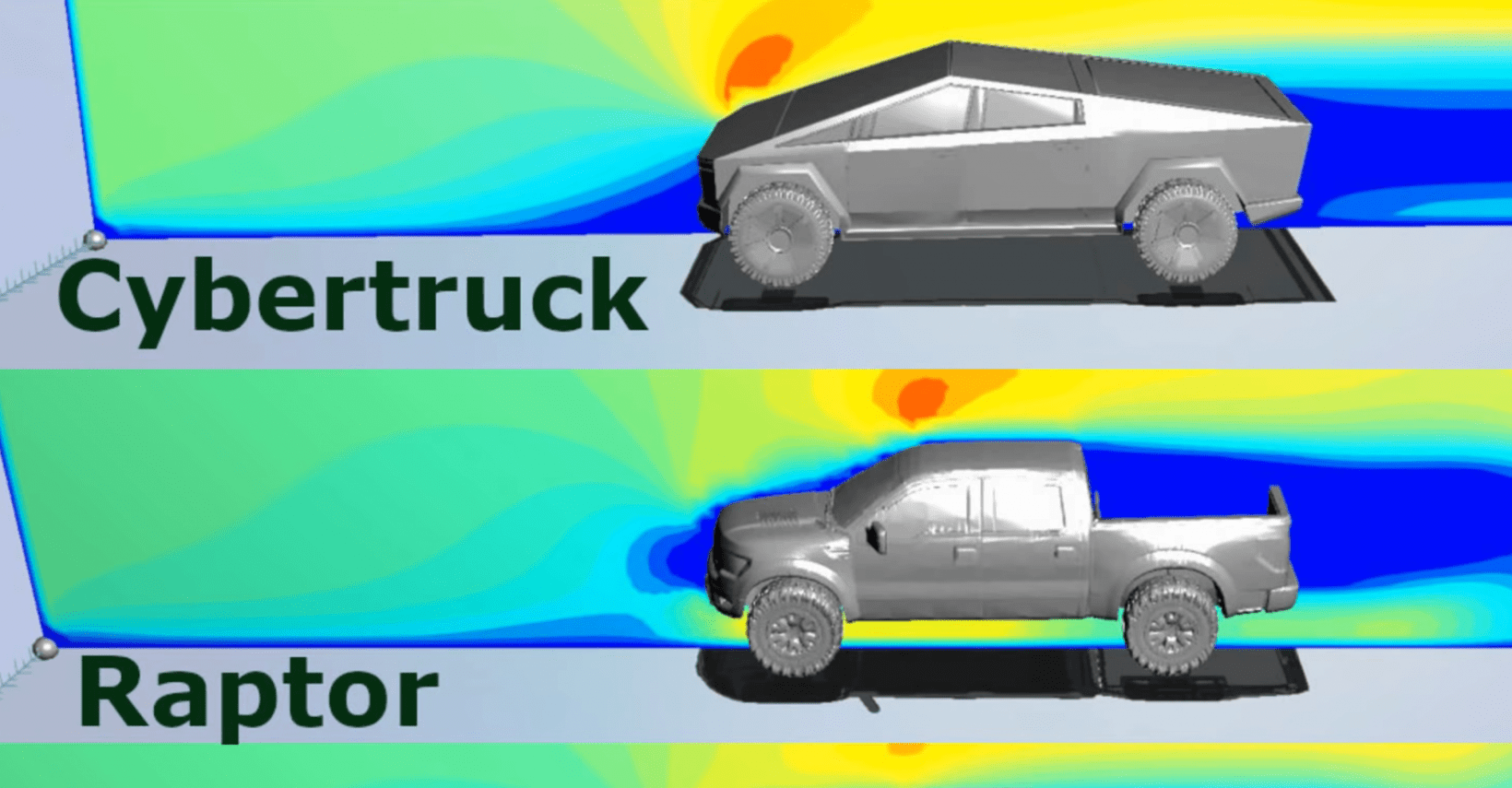When compared to the Rivian R1T, the Tesla Cybertruck's aerodynamic simulation produces a substantially poorer drag coefficient.
Despite its edgy, angular form, the future Tesla Cybertruck electric pickup's aerodynamics fall midway between those of its main rivals, the Rivian R1T and Ford F-150 Lightning. However, the Tesla Cybertruck's estimated 0.39 Cd cannot match Rivian's unrivalled R1T drag coefficient of 0.3.

Sunday, July 24, 2022 | Chimniii Desk
During Tesla's quarterly results press conference the other day, Elon Musk made a commitment about the release of Cybertruck in the middle of 2023. This year will be devoted to scaling up production of Tesla's current electric vehicles, which the company can't produce rapidly enough to meet demand. The polarising "edgy" stainless steel look of the Cybertruck hasn't stopped its supporters from placing preorders, generating a sales surge that briefly exceeded the market capitalization of established automakers like BMW before the electric pickup had even begun to be shipped.


Aleix Lázaro Prat, an aerodynamics expert at Numeric Systems, was curious about the drag coefficient (Cd) of the Cybertruck due to its angular design, therefore they determined it using the geometry that is currently publicly available. The programme generated a drag coefficient of 0.39, which is worse than Rivian's boasted-about stellar value of 0.3 for its R1T electric truck but perhaps better than the Cd of its other direct rival, the Ford F-150 Lightning. Aleix Lázaro claims that:
Advertisement

Advertisement
Contrary to popular belief, the roof's sharp edge does not result in a significant dissociation. Although the flow looks detached, the air actually follows the slope rather fluidly. The boundary layer doesn't really expand. This is extremely amazing and gives this pick-up truck a significant aerodynamic edge over others. Additionally, the diffuser has a noticeable impact in the middle of the vehicle's rear end! It lowers the wake and produces suction.
On the other hand, the front edge that joins the bumper and the bonnet, the vertical edge directly behind the front lights, the "protectors" and surrounding jagged geometry of the wheel arches, the rim style, and the geometry of the a-pillar and c-pillar all provide clear turbulent structures. The sharpness of these edges contributes to the formation of turbulent formations. These geometrical characteristics make the vehicle more aerodynamic, which eventually lowers the CYBERTRUCK's range. Additionally, the flow rapidly separates due to the pointed rear end, creating a sizeable low energy area (wake), which is primarily seen behind the top and side rear-end edges.
Advertisement

Advertisement
The customary disclaimers are made by Mr. Prat, stating that their estimates are based on the current design and do not take into account potential future alterations to the Cybertruck that are likely to occur between now and the time the first preorders begin to arrive next summer.
Overall, the Cybertruck does not perform worse in that aspect than the Cd of its main competitors, despite having aerodynamics that are twice as bad as those of the Tesla Model S, which causes it to lose battery range considerably more quickly at high speeds. Except for the superb work done by the Rivian team on the R1T truck, which gives a more conventional appearance than Tesla's instantly recognisable Cybertruck.
Advertisement